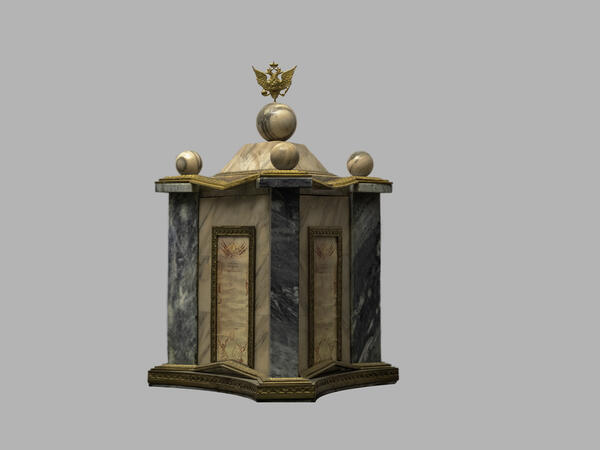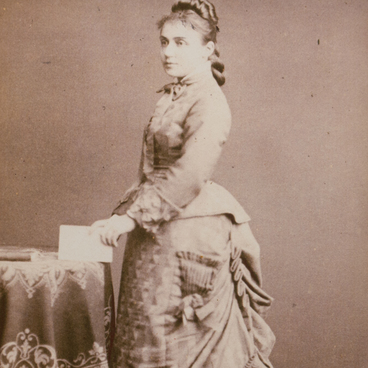The Zertsalo is a mandatory attribute of state institutions of the Russian Empire. The history of this object is connected with one of the main reforms of Peter I concerning the legal system and government control. The Zertsalo served as a symbol of compliance with the laws and was considered a mandatory attribute, which was located in all ‘prisutsvennie mesta’ (as state-run institutions were called at that time). That tradition existed in Russia until 1917. The Zertsalo was a triangular pyramid topped with a double-headed eagle. Among the many hundreds of his decrees, the emperor identified the three most important ones. These exact decrees were reproduced on the three faces of the Zertsalo.
The word ‘zertsalo’ itself means a mirror, but in this case, it carries a rather symbolic meaning. In the European tradition, compilation of texts of moral character were called that way. In Russia, the most popular of them was the book ‘The honest mirror of youth, or an indication for an everyday behavior, collected from various authors’, also compiled at the behest of Peter I.
The museum funds house a Zertsalo of the 19th century. It is made of pink marble. Decorations in the form of balls are installed on the sides of gray marble. The zertsalo is crowned with a bronze double-headed eagle mounted on the ball. The decrees of Peter I are inserted in gilded bronze frames. The Zertsalo was received by the museum in 1917 — when it was no longer displayed in public places after the revolution by the decision of the Soviet government. In the 18th century, the Zertsalo was considered a symbol of the new Russia and its new administration, created by Peter I, which the Soviet state did not inherit.
There were three decrees of the emperor on the sides of the Zertsalo. The first is the Decree on the preservation of Civil Rights (April 17, 1722). The second is the Decree regulating behavior in judicial places (January 21, 1724). The third is the Decree on State Charters and their importance (January 22, 1724).
At the same time, the Decree on the preservation of civil rights contained instructions about the Zertsalo itself:
The word ‘zertsalo’ itself means a mirror, but in this case, it carries a rather symbolic meaning. In the European tradition, compilation of texts of moral character were called that way. In Russia, the most popular of them was the book ‘The honest mirror of youth, or an indication for an everyday behavior, collected from various authors’, also compiled at the behest of Peter I.
The museum funds house a Zertsalo of the 19th century. It is made of pink marble. Decorations in the form of balls are installed on the sides of gray marble. The zertsalo is crowned with a bronze double-headed eagle mounted on the ball. The decrees of Peter I are inserted in gilded bronze frames. The Zertsalo was received by the museum in 1917 — when it was no longer displayed in public places after the revolution by the decision of the Soviet government. In the 18th century, the Zertsalo was considered a symbol of the new Russia and its new administration, created by Peter I, which the Soviet state did not inherit.
There were three decrees of the emperor on the sides of the Zertsalo. The first is the Decree on the preservation of Civil Rights (April 17, 1722). The second is the Decree regulating behavior in judicial places (January 21, 1724). The third is the Decree on State Charters and their importance (January 22, 1724).
At the same time, the Decree on the preservation of civil rights contained instructions about the Zertsalo itself:



